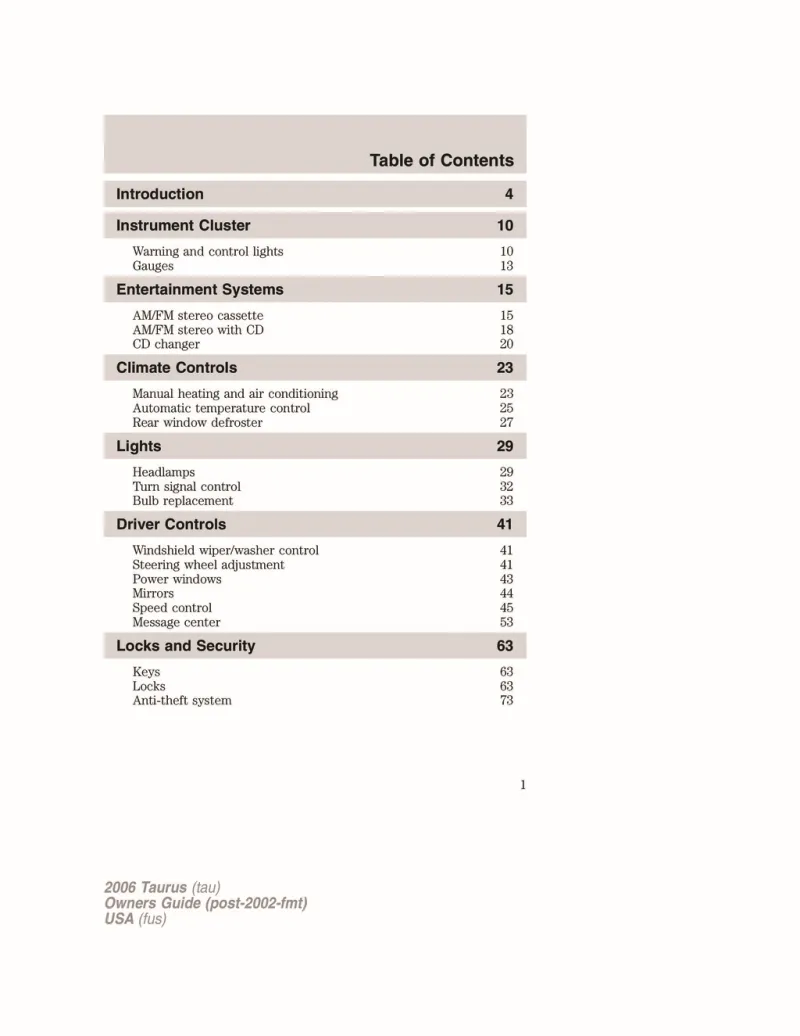2006 Ford Taurus Owner's Manual

Table of Contents
2006 Ford Taurus Overview
Introduction
The 2006 Ford Taurus embodies a blend of reliability, comfort, and practicality, making it a favored choice among sedan enthusiasts. With a reputation for durability and a spacious interior, this model caters to families, commuters, and anyone seeking a dependable vehicle. The Taurus stands as an emblem of Ford's commitment to producing cars that focus on the everyday needs of drivers while offering a smooth and enjoyable driving experience.
Powertrains
The 2006 Taurus offers two powertrain options that ensure versatility and adequate performance. The base model is powered by a 3.0-liter V6 engine that generates 155 horsepower, delivering a commendable balance of power and fuel efficiency. For those seeking more punch, a higher-output 3.0-liter V6 engine option is available, producing 201 horsepower. Both engines are paired with a responsive four-speed automatic transmission, providing seamless shifts and contributing to the Taurus's enjoyable driving dynamics.
Trims
This model year presents a variety of trims, including the base SE, the mid-level SEL, and the plush Limited edition. Each trim is designed to cater to different customer preferences, featuring increasing levels of comfort and technology. The Limited trim, for instance, comes equipped with premium amenities, such as leather seating, upgraded audio systems, and additional convenience features, offering a more luxurious driving experience.
Features
The 2006 Ford Taurus boasts an array of functional and comfort-focused features. Standard equipment includes air conditioning, power windows and locks, and a four-speaker audio system with CD player. Higher trims elevate the experience with available options like a sunroof, rear parking sensors, and multifunction steering wheels that enhance convenience for the driver.
Owner's Manual
The owner's manual for the 2006 Ford Taurus serves as an essential resource, providing crucial information on vehicle operation, maintenance schedules, and troubleshooting tips. It is an invaluable guide that ensures owners can maximize the reliability and longevity of their Taurus, enhancing the overall ownership experience.
User manual download
The Ford Taurus owner manual for the 2006 model year is to be found in PDF downloadable format on this page. The owner manual for the model year 2006 is free and in English, but the repair manuals are usually not easy to get and may cost more.
Manual Questions
Fill the form below and someone will help you!

